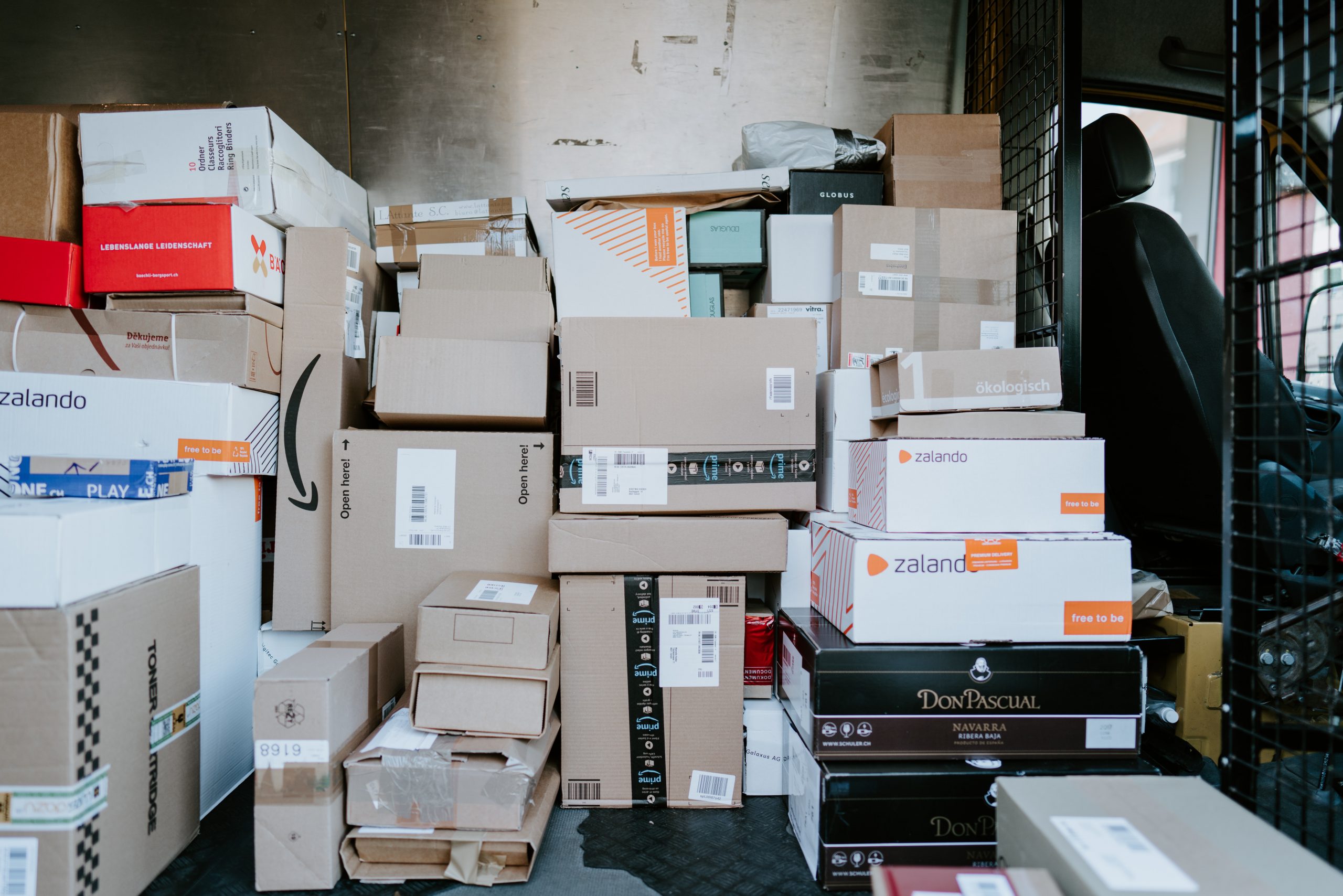Whether you’re moving to a new state or one block over, one of the key items on your to-do list will be making sure your important mail finds you at your new home. Even if you seem to only get flyers and coupons, some critical communications still arrive only by snail mail.
For some individuals, filling out a United States Postal Service (USPS) change of address form may take care of it, but it’s not always that cut and dry.
To ensure none of your key correspondence goes into the wrong mailbox, let’s take a closer look at how to forward mail to another address.

Why Do You Need to Forward Your Mail?
When you move to a new address, you’ll probably want to share your updated info with friends and family. When the time comes, you may also update your forwarding address with places like your bank, your workplace, and any online retailers you receive shipments from.
But even if you’re timely with all your address updates, it can still take time for these changes to take effect on the business side of things. That means some pieces of mail could unintentionally end up at your old place.
Filing a change of address to forward your mail accomplishes a few things at once. It can:1
- Forward all mail that’s sent to your old address
- Send any packages to your new location
- Allow you to update your voter registration at the same time
With mail forwarding, you won’t have to worry that your grandmother’s handmade card is sitting in your former mailbox—or that you’ll miss an important bill. Instead, the post office will take care of seamlessly sending mail to your new abode, at least for a time.
What Are the Steps of Forwarding Your Mail?
If you’re moving to a new apartment, you might have all kinds of things on your mind—like how to pack up your prized pottery, or finding your new go-to coffee shop. Fortunately, the process of setting up mail forwarding is relatively simple.
You can request permanent mail forwarding service with the United States Postal Service in two ways. Choose either:1
- In-person – You can visit any United States Post Office to set up mail forwarding. If you need to look up a location, you can do so at the USPS Locations page. Ask for a free Mover’s Guide packet, which contains PS Form 3575. Fill this out and return it to the postal worker along with your official identification, such as a driver’s license or state ID card.
- Online – Completing your address change online is even simpler. Visit the Official USPS Change of Address website, complete the permanent change of address form, and pay the $1.10 fee to verify your identity.2 Once this is complete, the USPS will email a confirmation code to you which can then be used to cancel or modify your request.
Note that the online option is only available if your new address is within the United States. If you’re moving from one country to another, it may require an in-person visit to your local post office.
When Should You Submit a Change of Address?
Once you have your move details locked down, add mail forwarding to your move preparation checklist. To ensure your mail is forwarded in a timely manner, it’s best to take this step ahead of your “right down the block” or cross country move—but it’s not your only option.
You can request mail forwarding to your new address within the following time frames:2
- Up to 90 days before your move, or
- Up to 30 days after your move
While the latter option can save you in a pinch, USPS advises that it’s best to plan ahead. It can take up to three days for mail forwarding to take effect, so for best results, try to submit your request at least two weeks before your move.
What Is Included in USPS Mail Forwarding?
Forgot to tell Great Aunt Gertie your new address? No worries—that birthday card with a crisp five-dollar bill will still find you at your new home. Forwarded mail includes:1
- Letters and postcards sent via First-Class mail
- Packages shipped by Priority Mail, Priority Mail Express, or First-Class Package service
- Periodicals you subscribe to, such as magazines and newsletters (with a 60-day forwarding limit on these items)
So long as you move to a new location within the United States, other types of packages sent via USPS will be forwarded, too. However, you’ll have to pay the additional shipping cost from your previous location’s post office to your new address. These include:
- Packages by Media Mail
- USPS Retail Ground packages
What About Junk Mail?
If you’re accustomed to tossing half of your mailbox contents in the trash, you’ll be delighted to know that most junk mail doesn’t follow you to your new address.
Items sent via USPS Marketing Mail (formerly known as standard class, standard A, third class, or bulk mail) are not forwarded unless the business sending them pays an extra fee to cover the cost—which isn’t common.3 This category can include:
- Catalogs
- Advertising or marketing postcards and letters
- Nonprofit solicitations and mailings
- Mail addressed to “resident”
- Flyers or circulars
- Small parcels sent for marketing purposes
How Long Does Mail Forwarding Last?
Eventually, even seasonal cards with the latest holiday postage stamp will be returned to the sender if they keep arriving at your old address. Be aware of these mail forwarding limits:1
- 60 days – Magazines and newsletters you subscribe to will only be forwarded for 60 days, so be sure to notify them of your new address when you move.
- 12 months – One year is the standard length of mail forwarding for first-class mail and packages.
- 24 months – You can be granted an additional year of no-cost mail forwarding if you submit a request showing that you’re making reasonable efforts to notify correspondents of the new address. You will also need to demonstrate that financial hardship will result if the mail isn’t forwarded. This extension may result in a total of 24 months.
- Up to 30 months – You can sign up for up to 18 months total of fee-based Extended Mail Forwarding, equalling a maximum of 30 months (12 free months plus 18 extended months).
- Indefinitely – If you opt in to the paid PFS-Residential service, you can continue to have mail forwarded indefinitely, as long as you pay the monthly charge.
How Much Does It Cost to Forward Your Mail?
When you’re learning how to forward mail to new addresses, you’ll want to understand up front how much forwarding may cost for your specific needs.
You don’t need to budget much for basic mail forwarding functions, but a premium mail forwarding service may be available at a higher cost. Examine the range of costs below:
- Free – If you visit a post office to submit a PS Form 3575, you won’t be charged anything to forward your incoming mail.
- $1.10 – It may be more convenient to submit your mail forwarding online, but the USPS will make a small charge to your credit card to confirm who you are and protect your mail from identity thieves.
- $23.90 enrollment + $23.90 weekly – The USPS offers a Premium Forwarding Service Residential (PFS-Residential) that covers boxing up your first-class mail and shipping it to you once weekly via Priority Mail. Oversized mailings and all packages are forwarded with no additional postage charges.
- $19.95 to $39.95 – Extended Mail Forwarding costs $19.95 per six-month increment or $39.95 for 18 months purchased at once. This service allows you to extend the length of your mail forwarding to a maximum of 30 months (12 free months plus 18 extended months).
What If You Move Multiple Times?
If you keep your same name on the forwarding request forms to the USPS, your mail will follow you as many times as you move during the relevant time limits.
For example, a travel nurse from Minnesota could take a two-month job in Los Angeles, then spend six months in Orlando, three months in Chicago, and then move back to a different apartment in their home state.
Mail sent to the old Minnesota address will skip along the same cross-country route and then end up back in Minnesota at the new address—so long as a USPS mail forwarding form was completed for each separate move.
Who Should Be Notified Directly of Your Change of Address?
Ideally, you’ll want to use mail forwarding as a safety net to cover anyone you forget to notify directly. In the long run, you’ll want to provide your updated forward mailing address to any people or businesses sending you mail before your mail forwarding expires.
Notify these contacts and services directly by changing your mailing address via an online account or customer service contact:
- Banking, credit, and retirement accounts
- The Social Security Administration (SSA) if you receive any benefits
- The Internal Revenue Service (IRS)
- Your local Department of Motor Vehicles (DMV)
- Any other state or federal identification providers
- Medical and dental insurance providers
- Auto and other insurance providers
- Magazines or other periodicals you subscribe to
- Clubs you belong to
- Any lenders you currently owe
- Professionals such as your lawyer, doctor, dentist, or veterinarian
- Department of Veterans Affairs (VA) if you’re a veteran
You may also want to provide a forwarding address as part of service cancellation for:
- Utilities such as electric and gas, trash, water, telephone, cellular, cable, and streaming
- Rental or homeowner’s insurance
Finally, as an additional safety net, be sure to exchange your updated contact information with:
- The owner or landlord of your previous rental unit
- The new owners of a house you’ve sold
- Roommates from the home you’re leaving
Be Cautious of Mail Forwarding Scams
If you’re entering any personal information about your address change on a website that doesn’t include USPS.com, think twice. There are many third-party websites set up to offer mail forwarding services that charge you up to $100 or more in fees.
To be on the safe side, only submit your change of address in person at your local post office or online on the Official USPS Change of Address website.
Find Your New Address with Common

When it’s time to make a move, forwarding your mail may ultimately be one of the simpler tasks you can check off your list. But having the right home to move to can make your move even easier.
Common is all about simplifying and improving your switch to a new home. Our coliving homes are ideal for professionals who want the ease of a furnished space, shared amenities, and a built-in community.
Plus, we offer a range of options for renters looking for private studios and apartments that allow for just the right mix of privacy and connection.
If you’re looking for a convenient, attainable home that’s a bridge to a friendly community of peers, activities, and amenities, take a tour of our spaces today.
Sources:
- United States Postal Service. Standard Forward Mail & Change of Address. https://www.usps.com/manage/forward.htm
- United States Postal Service. Official USPS® Change-of-Address. https://moversguide.usps.com
- United States Postal Service. What is USPS Marketing Mail®? https://faq.usps.com/s/article/What-is-USPS-Marketing-Mail
- United States Postal Service. Find USPS Locations. https://tools.usps.com/find-location.htm

